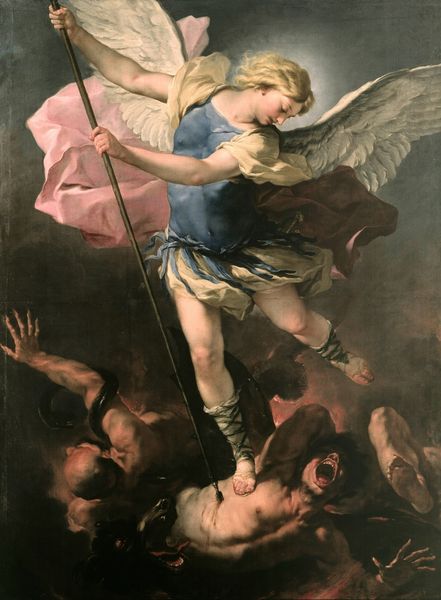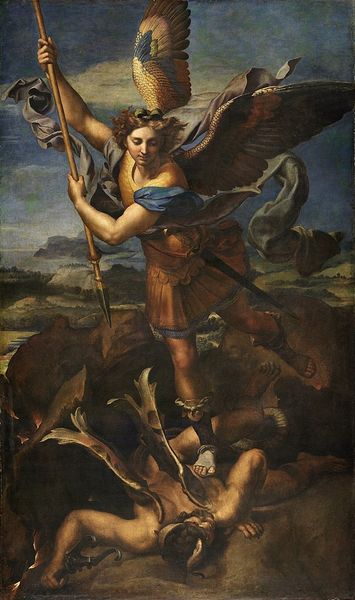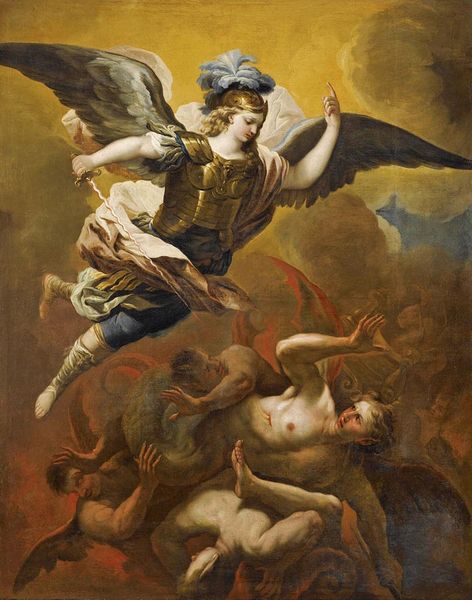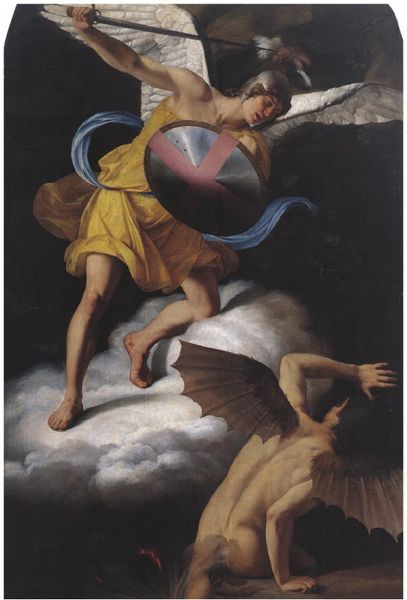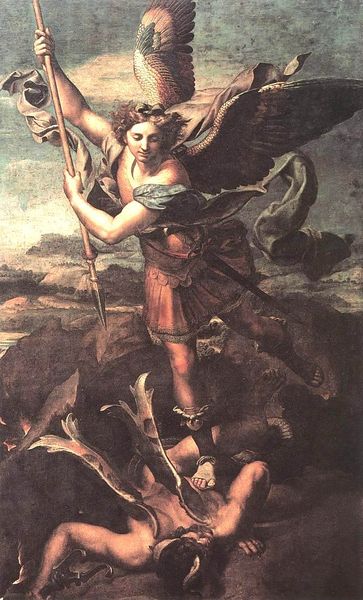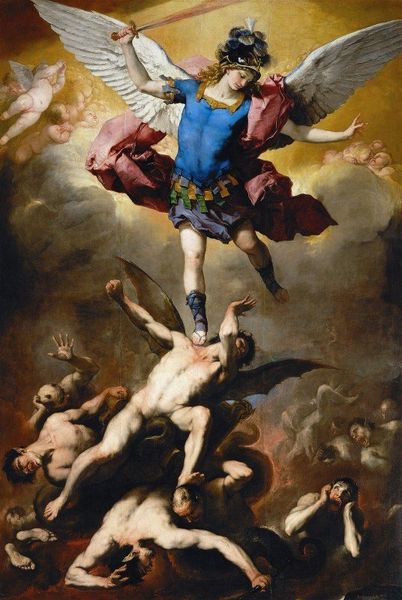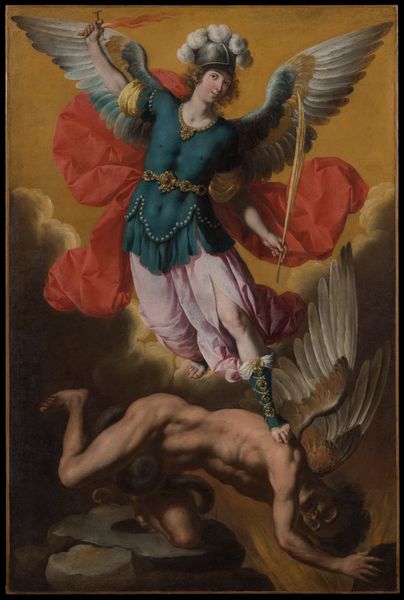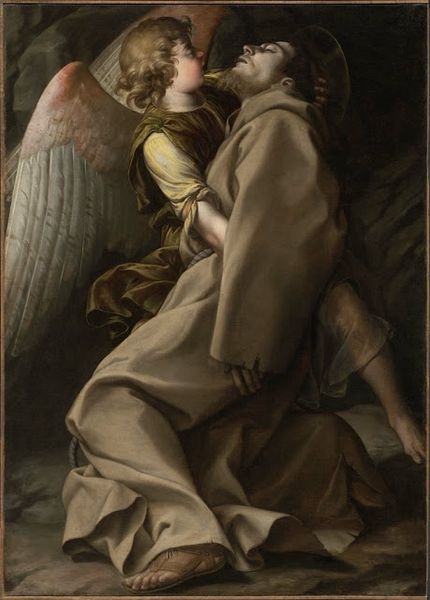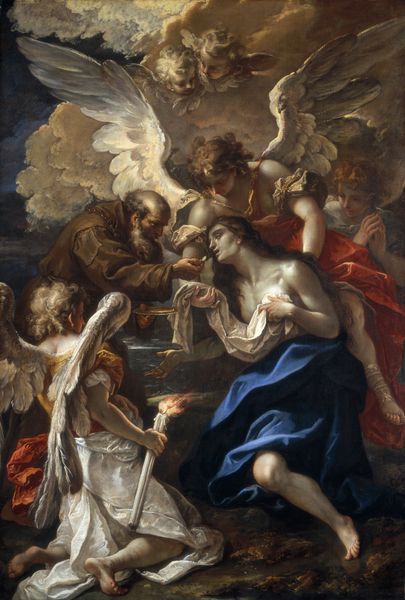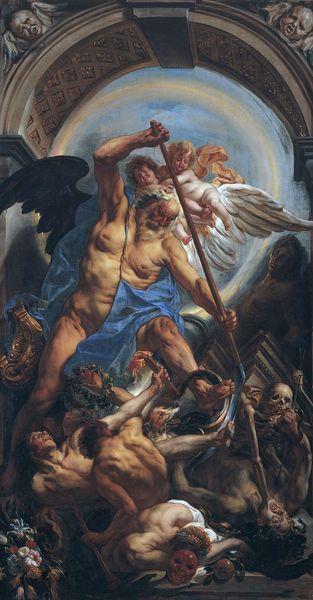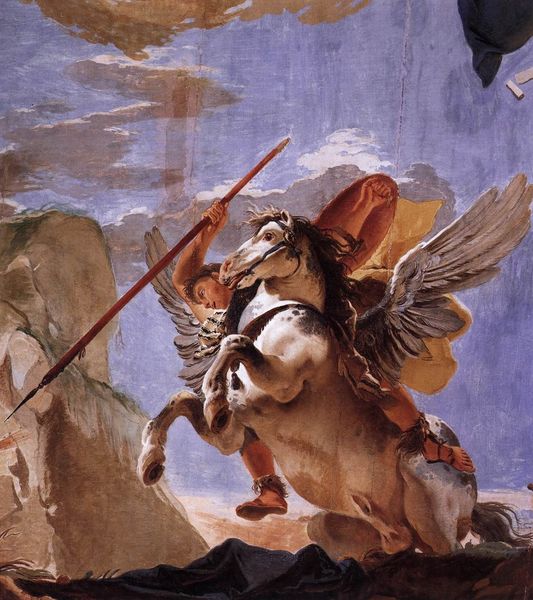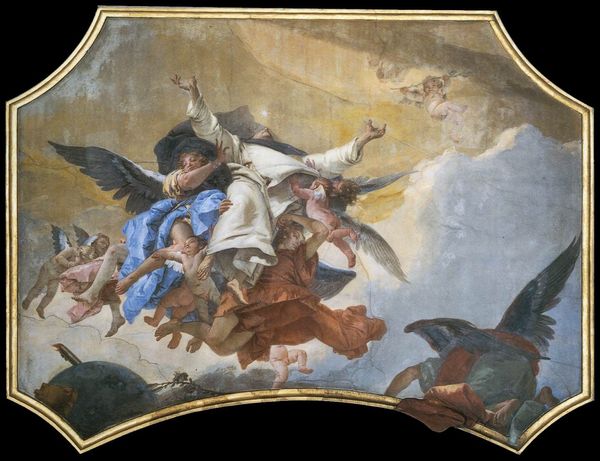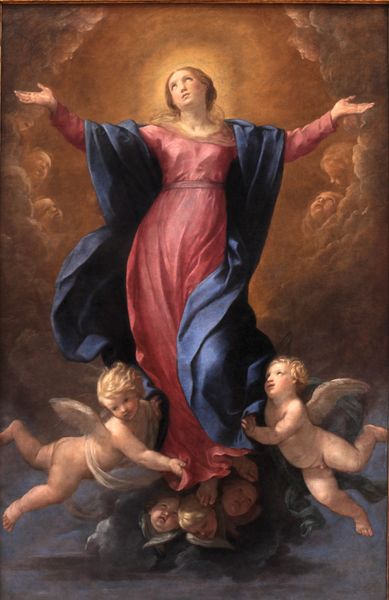
The Archangel Michael defeating Satan 1635
0:00
0:00
guidoreni
Santa Maria della Concezione de Cappuccini, Rome, Italy
painting, oil-paint
#
portrait
#
allegory
#
baroque
#
painting
#
oil-paint
#
figuration
#
oil painting
#
christianity
#
mythology
#
history-painting
#
italian-renaissance
#
nude
#
portrait art
#
angel
Dimensions: 202 x 293 cm
Copyright: Public domain
Editor: So, here we have Guido Reni's "The Archangel Michael defeating Satan," an oil painting from 1635. It's strikingly Baroque, all dramatic lighting and swirling fabric. What always gets me is the... theatricality of it all. What strikes you most when you look at this painting? Curator: What interests me most is how this piece reflects the socio-political anxieties of the time. Commissioned for a church dedicated to the Immaculate Conception, it visualizes the triumph of good over evil, deeply resonant in the context of the Counter-Reformation. Think about it, why portray Michael as almost androgynous, a beautiful youth rather than a hardened warrior? Editor: That's a good question. Is it to show his purity or distance him from earthly concerns? Curator: Precisely! This idealization speaks volumes. It distances the Church from accusations of corruption, presenting an image of ethereal, untainted power. And consider where it's placed – a Capuchin church, an order known for its reformist zeal and ties to Rome's elite. What public message does the patron want this image to give? Editor: So, it’s not just a biblical scene, but a carefully crafted political statement displayed prominently for the public. That shifts my perception quite a bit. Curator: Exactly. It invites viewers to reaffirm their faith in the Church, picturing the crushing of heresy, while at the same time subtly reinforce a specific interpretation of religious authority during the time. Do you find this re-contextualization interesting? Editor: Definitely. I always saw it as a straightforward religious painting, but seeing it as a political instrument makes it far more compelling. Thanks for highlighting this dimension. Curator: My pleasure. Analyzing art through this socio-historical lens offers deeper meanings and layers that shape how we understand art and society as a whole.
Comments
No comments
Be the first to comment and join the conversation on the ultimate creative platform.
